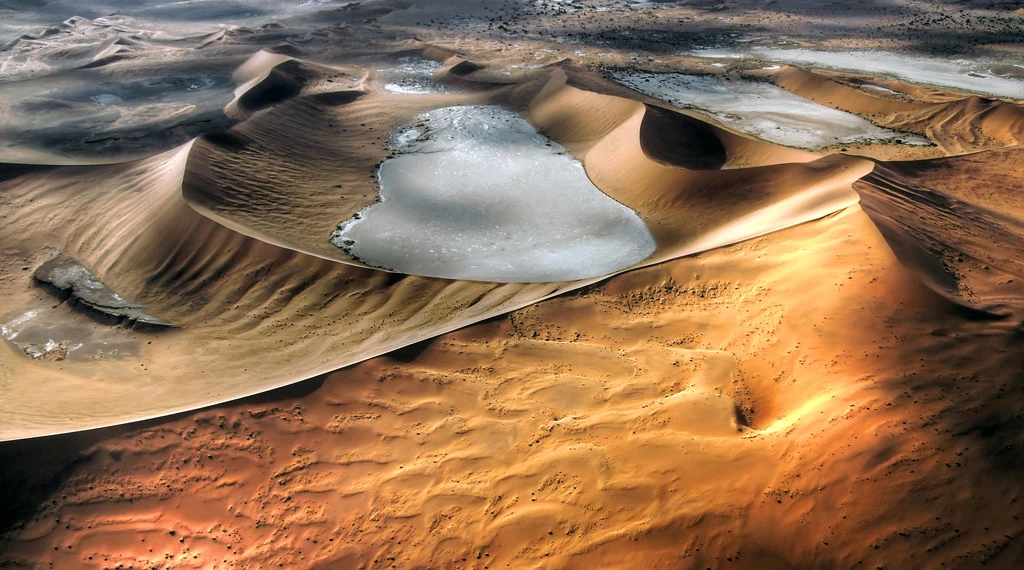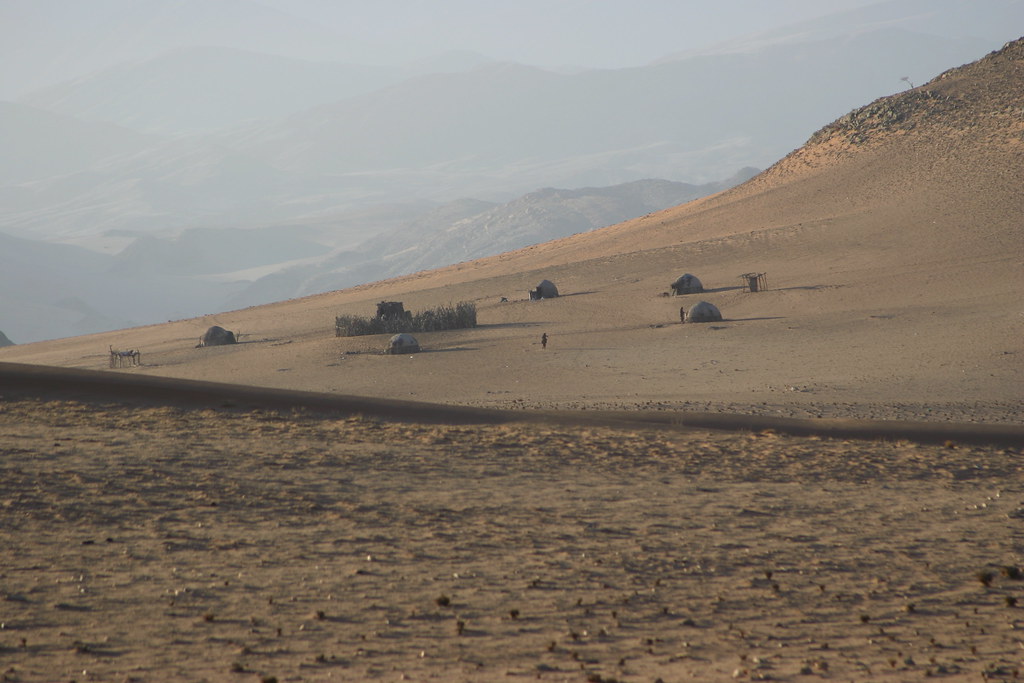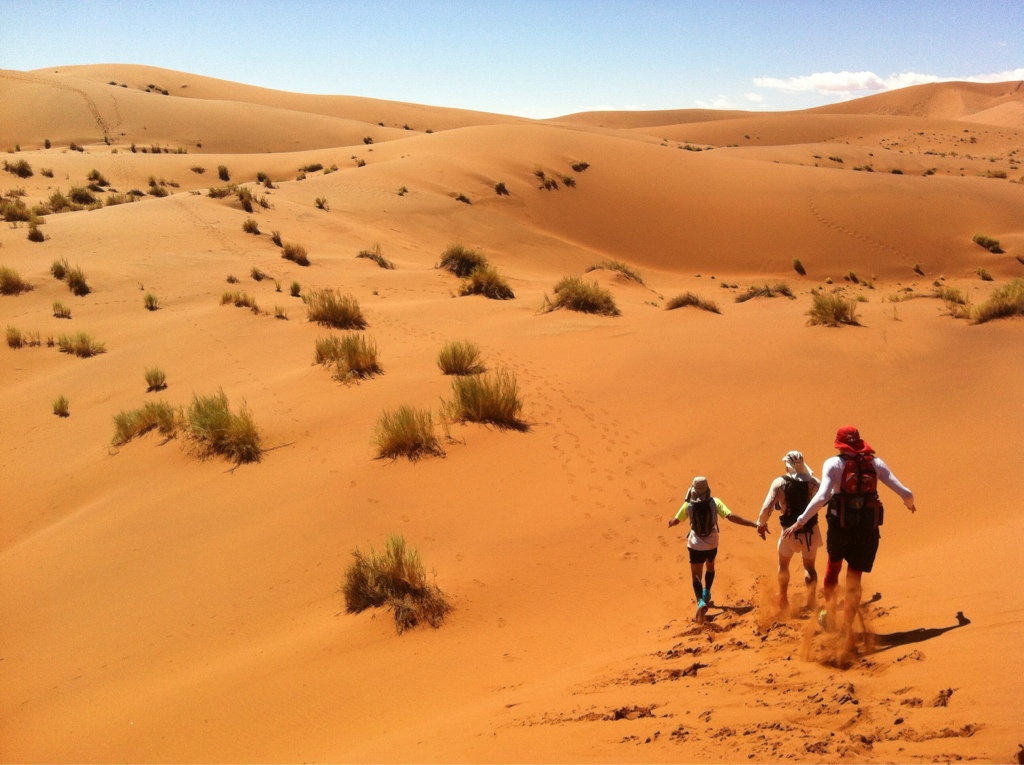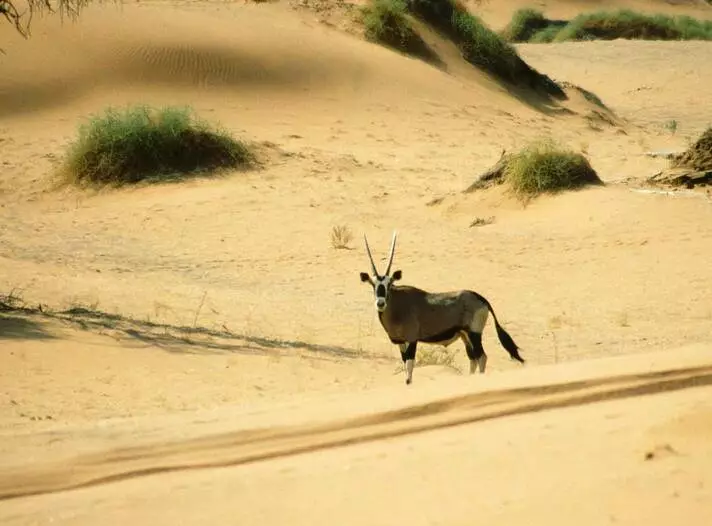Namib desert is recognized as one of the earliest deserts in the world. Like any other desert, it is very arid with little or no vegetation. Namib desert is located along the coastline in the Southern African region in the countries of Angola, Namibia and South Africa. Just like the name ‘Namib’ means vast place, the Namib desert extends over a huge area exceeding 2000km.
Due to the arid conditions in the desert, you will hardly find any humans living in the desert except for some pastoral communities like Ovahimba, Obatjimba Herero and Topnaar Nama.

Who Lives In The Namib Desert?
Some regions of the Namib desert are occupied by pastoralists like Ovahimba and Obatjimba Herero who live in the northern parts of the desert and Topnaar Nama who occupy the central area.
The fact that the communities living in the Namib desert are pastoral, means that they do not permanently live there. They use makeshift settlement structures so that when the conditions get worse they can easily leave to other areas. Since the communities are not very far from the water bodies which border the Namib desert they normally use the whalebone and the shellfish which they gather there to build their dwellings. The communities living in the desert normally live together as one to promote their unity and also security from the dangerous animals. The Ovahimba, which is also called the Himba, since they have large herds, use the dung from the animals to construct their houses. These communities living in the Namib desert are subgroups of the larger Khoikhoi people. Therefore some of their practices like speaking using click sounds are similar.

The Topnaar is believed to be one of the earliest people to come to the Namib desert. They were given the name Topnaar by the Dutch who found them there to mean that they were people of the upper land. Topnaar has a total of nine tribes and each is headed by a tribal government. The tribes are further divided into clans which are led by the chiefs who are assisted by a chosen council. In the early days, the leadership system here was hereditary but it was later changed so that the people could have a chance to elect the leader they wanted.
Since the Ovahimba dwell in the desert away from the modernized world, they can cherish their culture with little alienation. In this community once a child is born he or she belongs to two tribes, that of the father and the one of the mother. The clans are led by the eldest male in it. The Himba believe in only one god which is called Mukuru. They also believe in ancestral spirits. Every household has an ancestral fire which is considered to be holy by the people. The firekeeper who is the one in charge of the fire intermediates for the family members to the ancestral spirits. Here they believe that death can only be caused by a bad omen.
Just like the Himba, the Obatjimba Herero tracks their descent down to both the father and the mother. The Herero are divided into various tribes which share a similarity in the dialect and the fact they are pastoralists. However, the tribes have different dress codes. Some of the tribes were largely alienated when the missionaries came and they changed to modern dressing.
How Do Humans Survive In The Namib?
Life in a desert can be very challenging for a person. It can be very difficult for someone to find food or even water to sustain a livelihood. The temperatures in the Namib desert can be very high at times and unbearable, especially during the day when they reach almost 38°. At night the temperatures become very low. With all these hardships, the people living in Namib desert have found ways to persevere in these conditions.

The people living in Namib are pastoralists keeping animals like cattle, sheep and goats. The domesticated animals are adapted to survive in the harsh desert conditions as they can preserve water. From the animals the people are able to get products such as milk, meat or even eggs from chicken. These foods form their major foods while they are in the desert. These people also carry out trading activities with other neighboring communities whereby they exchange the food they have in plenty like meat and get other foods like cereals. They also sell their livestock for monetary value and buy what they need.
Due to the high temperatures experienced in the desert the people wear light clothes. They use the skins of the animals like sheep and cattle to make their clothes. Water can also pose a challenge in Namib desert. There Kuiseb river and Orange river in the Namib desert are greatly depended by the people for watering their animals and also for them to drink.
What Animals Live In The Namib Desert
Despite some humans living in the Namib desert, there are also some wild animals which live there. However, they live in separate areas.
The animals living in the Namib desert range from the mammalian animals, the insects, reptiles and also some wild desert horses.

The animals living in the desert are greatly adapted to survive despite the unfavorable conditions there. The Oryx in the desert are able to get a lot of moisture from any food they eat. This moisture can then be conserved in their bodies for a long time. Their body temperatures can also rise to as high as 40 degrees without any danger unlike other animals. The lions, elephants, rhinos, leopard, hyenas, gemsboks and other animals in the park are able to preserve water in their bodies for many days. Their body skins also serve as reflections as they prevent too much heat from getting in.
How Many Animals Live In The Namib Desert?
Namib desert is estimated to have different species of animals which cumulatively exceed 1768.
These animals are given a lot of protection by the Namibian government from poachers. They attract many tourists from many parts of the world.
